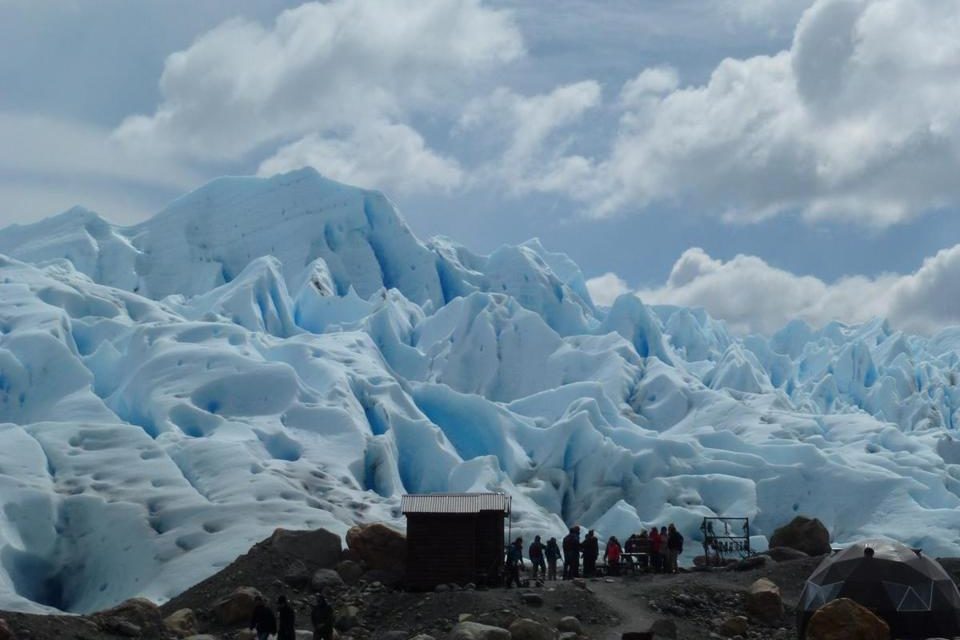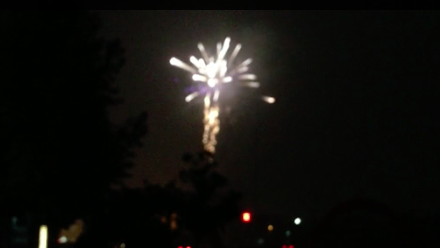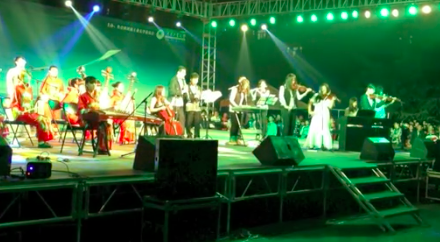LOS GLACIARES NATIONAL PARK, Argentina — Following a brisk hike on the Perito Moreno Glacier, my wife and I shared a toast with our fellow trekkers, raising glasses of whiskey sprinkled with crushed ice from the frozen water beneath our crampon-strapped boots. We dubbed it Scotch on the glacial rocks.
The celebration occurred in Los Glaciares National Park, part of a natural wonderland in southern Argentina known as Patagonia. Split between Chile and Argentina, it’s a South American version of Alaska with snow-capped mountains, blue-tinged glaciers, pristine waterfalls, and a cornucopia of plants and wildlife.To most Americans, Patagonia is a company that makes trendy outdoor clothing. It was also one of the South American hideouts used by Butch Cassidy and the Sundance Kid before they were gunned down by Bolivian soldiers in a shootout immortalized in the 1969 movie starring Paul Newman and Robert Redford.
Today, it’s a mecca for hikers, campers, climbers, and other outdoor enthusiasts from all over the world, a booming tourist area where backpacks are as common as empanadas.
After flying from New York to Santiago, we spent three days in the Chilean capital before flying to Punta Arenas, a scenic city near the country’s southern tip. As part of our tour package, we were picked up at the airport and driven to our hotel in Torres del Paine National Park, a five-hour trip on a highway known as Fin del Mundo, or “end of the world’’ in Spanish, a fitting description for a remote region that has Antarctica for a neighbor.
About halfway between Punta Arenas and Torres del Paine, we stopped for lunch at the Cerro Negro ranch, which is owned by the descendants of a Croatian immigrant who came to Patagonia in the early 1900s. (The family also owns Las Torres, the hotel we stayed at in Torres del Paine.) The ranch has 1,600 sheep and 300 cows, along with horses, goats, ostriches, and guanacos, speedy llama-like creatures prevalent in Patagonia.It was the start of sheep-shearing season — the animals are bathed and sheared once a year — so we got to see the process in person.
The shearers work at a frenetic pace, trimming hundreds of sheep per day. A ranch hand told us the wool was headed for China, the world’s largest wool market.
When we finally arrived at the entrance to Torres del Paine, several vehicles were stopped near a bridge where a puma was prowling. There are only 50 to 75 pumas in the 600,000-acre park, and they are are easily camouflaged, so sightings are relatively rare. By the time we got to the bridge, the puma was gone.
Our rustic hotel was surrounded by frosted mountains and set in the middle of a working ranch, where beret-wearing gauchos herded horses outside our window every morning.
The park is teeming with guanacos, a staple of the puma’s diet. We saw hundreds of skeletons, especially near fences, where pumas stalk guanacos that stumble while trying to leap over the barriers. We didn’t see any pumas until our third and final day in Torres del Paine, when my wife spotted a bobbing head in the distance.
Pumas and guanacos are part of the park’s diverse fauna, which includes dozens of mammals and more than 100 bird species. We saw condors, eagles, vultures, rheas (flightless birds related to the ostrich), hares, foxes, and even pink flamingos. There are also 250 kinds of plants, including the calafate, a thorny bush that produces bright yellow flowers and dark berries.
It’s almost always cold in Patagonia, regardless of the time of year, and the whipping winds don’t help. We were there in October, and the only jacket I brought was a light windbreaker. Big mistake. If you’re planning to go, pack as if you’re going on a ski trip, even during the summer.
The park’s mountain range is marked by a trio of jagged granite peaks known as the Three Towers, ranging in height from 7,400 to 8,200 feet. Adventurous mountaineers regularly scale the peaks, though it requires a special permit and lot of climbing experience. I’m a daredevil who has skydived, paraglided, and bungy jumped, but my wife persuaded me that if I tried to climb one of the towers, it would be a one-way trip.
From Torres del Paine we traveled to El Calafate, the closest town to Los Glaciares National Park. The trip took longer than scheduled because we got stopped at the Chile-Argentina border for two hours as guards questioned our driver about his license and passenger list. The guards let us through only because phone problems prevented them from finding another driver.
The following day, we traveled by bus and boat to Perito Moreno Glacier, named after Patagonia explorer Francisco Moreno. After docking, we walked a short distance, stopped to put on crampons, and began our trek on the famous glacier that is part of the Southern Patagonian Ice Field, the world’s third-largest behind Antarctica and Greenland.
Perito Moreno is one of the few glaciers in the world that is growing, not shrinking. Scientists have offered various explanations, but nobody is really sure why. Even so, we saw large chunks of ice splitting off into the water, a natural process known as calving that can produce huge waves and a loud cracking or booming sound.
When we returned to El Calafate, a thriving tourist town that serves as the gateway to Los Glaciares, we visited an ice bar that’s attached to a futuristic glacier museum. Almost everything inside is made of ice, including the glasses and tables. Everyone is given an insulated silver jacket to wear, and you can only stay for 20 minutes. The $16 admission price includes all you can drink before your lips go numb.




